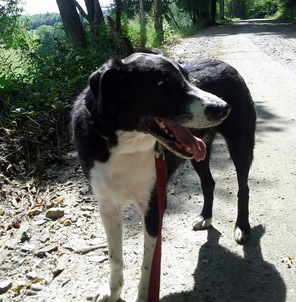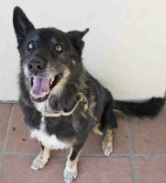
Exercise = happy hound
Please welcome Lisa Perrault to our blog team! Lisa is a professional certified dog trainer and behavorist. She will be providing us regular posts with training best practices! Lisa's website is MyWellManneredMutt.As our fall schedules become packed with soccer games, back-to-school nights and work deadlines, our dogs often find themselves spending more time home alone. Combined with less exercise from shorter days and rainy weather, dogs begin to get restless this time of year. Some signs that your dog could use some at-home stress relief include: whining or barking when you leave, more frantic greetings then normal, or getting into mischief during the day.
If you suspect a change in routine and less exercise is to blame for the new stress-at-home behavior, try these tips to liven up your doggie’s day:
- Increase exercise intensity. Pick up your walking pace to a brisk walk or add a few short sprint zones to your normal routine. Your dog will think it is great fun and get a bit more of a workout.
- Use your weekends. Bring your pooch on a weekend family hike and you will have a calmer dog for the first part of the week. For most dogs, exercise has an immediate and cumulative effect so you can use your weekends to make up for shorter mid-week walks.
- Daylight savings resolution. Use the extra hour of sleep you will gain when the clocks go back to switch your long dog walk to the morning.
- Play indoor games. Hide and Seek, Tug of War or Go-Find are all fun ways to burn off energy without getting wet or cold outside. Kids will appreciate the homework break.
- Go somewhere new. Change up your routine by walking in a different neighborhood or park. Fido will be more stimulated be the new smells and sights, even if the length of the walk is the same.
- Replace food bowls with toys. Extend the fun of mealtime and give your dog a mental workout with stuffed Kongs and food puzzle toys.
- Hire a pro. Professional dog walkers will come to your house on designated days and take your dog out for a walk, hike or play. It is a great feeling to come home to a happy and well-exercised pet.

If adding brain-games and exercise do not help to calm your pet when left alone, consider what changed in your dog’s world that would cause her to feel anxious. Going to the vet to rule out a medical issue is always a good first step. One dog began to urinate indoors at the same time new roadwork construction project was causing noise just outside of the window. Another became frantic when a family of squirrels took up residence in the walls. When you are at work, your dog may be dealing with new neighbors, changes in flight patterns from a nearby airport or a free-roaming neighborhood dog or cat. Ask a neighbor or set up a webcam during the day to get to the bottom of a puzzling situation.
In the next entry, I will describe training exercises to help a mildly stressed dog. What are your tips for keeping your dog busy during the day? Do you have any food toy recommendations to share?

"Girl", a senior pooch is up for adoption
This blog post was contributed by blogger, Jeff Narucki whose blog, Senior Pooch explores the adventures and love of owning a senior pooch!Why so old? I recently had someone at work ask me why I would get a dog so old, although I suspect the question was really, "Why did I adopt an older dog again?"
Quite simply, I did it because they deserved a second chance, I wanted a dog, and I felt I could handle the challenge and expense.
Senior dogs do come with baggage, but honestly, some handle it much better than others. My pal Boo Boo, for example, was afraid of everything when I got him. I couldn't put my foot up to block him from going out the door first without him cowering like he was going to be kicked. For some dogs, trust doesn't come easy. It was probably six months before I noticed that he wagged his tail for the first time.

Rusty, senior pooch
The expenses can get up there quickly. Not in every case, and sometimes not until the very end. I'd venture that breed, size, and how well they're taken care of play big factors in these areas.
Patience is another big factor. Some dogs are stubborn, and none more so than some older dogs. I've been lucky in that once we achieved a certain degree of trust, that my dogs have had an open mind about working with me. It may very well be that older dogs are so set in their ways that they take longer to train, so patience is something that I've had to learn when dealing with challenges. On the dog's side, the biggest challenge would appear to be, at least from what I've read in the many ads for older dogs on PetFinder.com, is that they recommend the older dog, being an only dog. I could definitely see that and would never recommend dropping a puppy in with an old dog, who is more interested in sleeping than jumping around and playing all day.
That said, older dogs are frequently house trained, and are usually eager to please their new owners (at least in my case). With Rusty, this has translated into me teaching him a variety of new tricks and skills, the most important being "Leave It". We still have a ways to go, but with persistence (and the occasional treat... OK sometimes more than occasionally) he's learning all sorts of new things and is much less of the madman that I adopted.
As far as I'm concerned, there will always be an older dog in my house.





 RSS Feed
RSS Feed